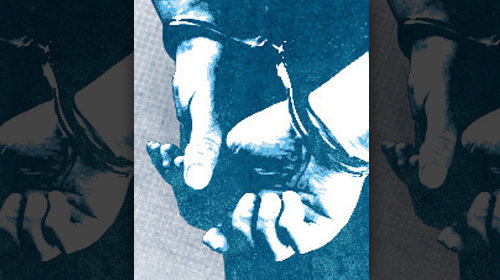
Today, the U.S. has the highest incarceration rate of any country in the world. With over 2.3 million men and women living behind bars, our imprisonment rate is the highest it’s ever been in U.S. history. And yet, our criminal justice system has failed on every count: public safety, fairness and cost-effectiveness. Across the country, the criminal justice reform conversation is heating up. Each week, we feature our some of the most exciting and relevant news in overincarceration discourse that we’ve spotted from the previous week. Check back weekly for our top picks.
Justice Department Calls for Reduced Federal Prison Population
In a speech this week to the National District Attorneys Association, Assistant Attorney General Lanny Breuer called on Congress to pass a pair of measures that would bring down the federal prison population. The first proposal would increase the amount of “good time” a prisoner could earn off of his sentence for good behavior by seven days per year. The second proposal would allow prisoners who successfully participate in programs that have been demonstrated to reduce recidivism to earn up to 60 days per year of credit toward completion of their sentences.
The Department of Justice focused its attention on front-end reform, too. In its public comments to the U.S. Sentencing Commission, the DOJ called for smarter allocation of public safety resources. The DOJ called for a systemic and crime-by-crime review of federal sentencing policy, and stated elsewhere that “maximizing public safety can be achieved without maximizing prison spending.” You can read the full letter here.
Massachusetts Legislature Sends Major Criminal Justice Bill to Governor’s Desk
Gov. Deval Patrick has until Sunday to act on a bill that would, among other things, eliminate parole for certain third-time felony offenders; reduce mandatory minimum sentences for some drug offenses; raise the threshold amounts for certain drug offenses to be classified as trafficking; and reduce the “school zone,” an area around school zones in which drug offenses carry enhanced penalties, from 1,000 to 300 feet. Families Against Mandatory Minimums provides a helpful summary of the bill, H.4286, here.
S. Dakota Committee Will Search for Solutions to Rising Prison Populations and Costs
Like many other states, South Dakota’s prison population is six times higher today than it was in 1980, and its corrections expenses of $100 million are expected to double in the coming decade. In response to the growing crisis, the legislature has commissioned an 18-member panel to study South Dakota’s criminal justice system and offer recommendations to safely reduce its prison population. The group, which met for the first time Wednesday, includes six legislators, three judges and others from the legal system and the governor’s office. They will produce policy recommendations by November that the Legislature will consider in January. The Pew Center on the States will assist the panel.
Why Falling Recidivism Hasn’t Reduced New Hampshire’s Prison Population
New Hampshire’s rising prison population has prompted lawmakers to look to prison privatization to control costs. But the state has other viable, untapped resources to reduce its prison population. Recidivism rates in New Hampshire have fallen at an average annual rate of 4.2 percent. Some credit for the decline owes to the state’s implementation of evidence-based programs to supervise and reintegrate people in society. Perhaps expanding those programs, which have been proven to reduce costs and crime rates, is a better option than privatizing prisons, which often doesn’t save states any money and comes with its own set of problems (see recent examples from Florida and Arizona).
One Year into Effect, Kentucky’s Pretrial Reforms Appear to be Working
Early data examining Kentucky’s omnibus 2011 reform bill is cause for cautious optimism. Among other things, the new law provided for defendants to be screened with a risk-assessment tool before trial, so as to determine which individuals could await sentencing outside of jail. So far, not only are fewer defendants being jailed before sentencing, but court appearance rates have gone up slightly statewide, and public safety has improved in the county featured in this article.
Learn more about overincarceration: Sign up for breaking news alerts, follow us on Twitter, and like us on Facebook.

